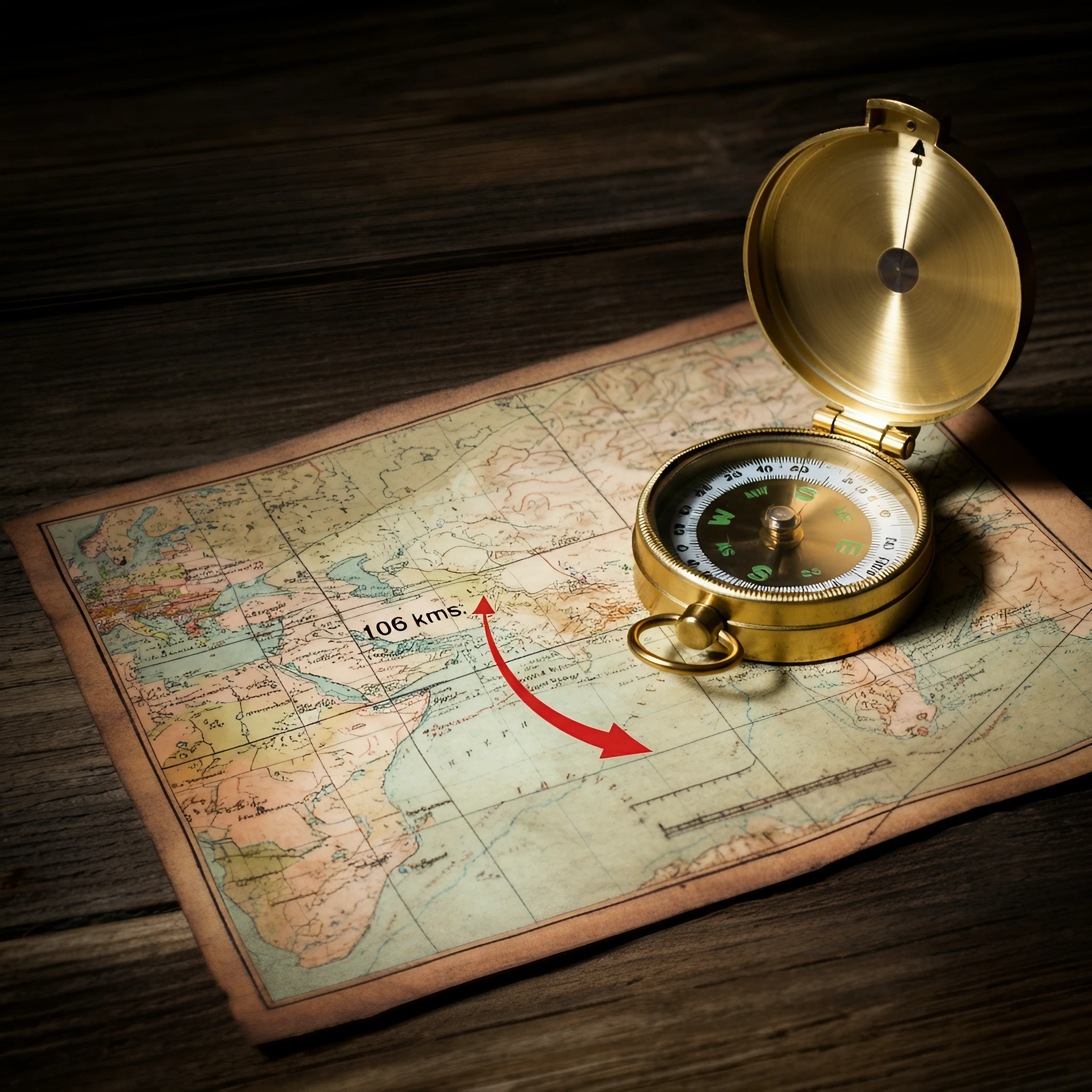Have you ever needed to convert kilometers to miles while traveling or studying? Whether you’re exploring distances on a map or trying to ace your homework, knowing how to convert between these units can come in handy. Here, we’ll focus on converting 106 kilometers to miles, explain the math behind it, and explore practical uses for this conversion.
Quick Answer
106 kilometers is equal to 65.8642 miles.
But how do we arrive at this number? Let’s break it down step-by-step.
Understanding Kilometers and Miles
- Kilometer (km): The metric system’s unit of measurement for distance. Its widespread use makes it a global standard in most countries.
- Mile (mi): Part of the imperial system, the mile is used predominantly in the United States and the United Kingdom. It remains the standard for measuring long distances in those regions.
Today, the ability to convert between kilometers and miles is essential, especially for cross-border travelers or business professionals working internationally.
The Conversion Formula
The conversion factor between kilometers and miles is:
1 kilometer = 0.621371 miles
This means that to convert kilometers to miles, you multiply the number of kilometers by 0.621371.
Step-by-Step Conversion of 106 Kilometers to Miles
Here’s how to convert 106 kilometers into miles manually:
- Start with the formula:
\[ \text{Miles} = \text{Kilometers} \times 0.621371 \]
- Plug in the value:
\[ \text{Miles} = 106 \times 0.621371 \]
- Do the math:
\[ 106 \times 0.621371 = 65.864226 \]
- Round the result (optional):
\[ \text{Miles} \approx 65.8642 \]
And there it is! 106 kilometers equals approximately 65.8642 miles.
Why Convert Kilometers to Miles?
1. Travel
- Planning a road trip in the U.S. or U.K.? You might need to convert a foreign country’s kilometers into miles to understand local road signs or maps.
- For example, if you rent a Volvo ES90 in Europe (with its range of 700 kilometers), converting to miles (700 km ≈ 435 miles) lets you better manage your U.S.-style road trip expectations.
2. Academic Purposes
- This conversion frequently appears in science and mathematics studies as students learn about different measurement systems.
3. Sports and Fitness
- Training for a marathon? U.S.-based runners tracking their progress might prefer distance data in miles, while international apps like Strava display distances in kilometers.
4. Everyday Use
- Ever compared gas mileage? Knowing both units allows you to better understand your car’s efficiency, regardless of your location.
A Brief History of Kilometers and Miles
- Kilometer Origin: The kilometer originated during the French Revolution, as part of the metric system aimed at standardizing measurements worldwide.
- Mile History: The mile dates back to ancient Rome, where “mille passuum,” meaning “a thousand paces,” formed the base for the measurement.
While both units measure distance, their origin and use have been shaped by cultural and historical influences.
Online Tools for Quick Conversions
Manual calculations are fun, but what if you’re in a hurry? Here are some tools you can use for quick conversions:
- Google Search: Type “106 kilometers to miles” directly into the search bar for an instant result.
- Mobile Apps: Apps like Unit Converter or physical calculators with conversion functions can come in handy.
- Outwrite: If you’re drafting reports or academic papers, writing tools like Outwrite can ensure your measurements and hybrid calculations are spot-on!
Wrap-Up
Now that you know 106 kilometers equals 65.8642 miles, you’re ready to explore the world with confidence. Whether you’re planning your next trip, completing an assignment, or simply satisfying your curiosity, this conversion skill is something you’ll use time and again.
Still not a fan of manual math or dealing with numbers? Don’t worry. Leverage online tools and apps for real-time, hassle-free conversions. And remember, behind every conversion is an opportunity to learn more about the world around you.
Got a specific kilometer-to-mile conversion in mind? Share it in the comments below, and we’ll help you out! 🌎
Image Suggestions:
- A highlighted route on a global map showing distance in both kilometers and miles.
- A split image of a highway sign displaying “KM” on one side and “Miles” on the other.
- An infographic showing “1 KM = 0.621371 MI” with examples like converting 50 km, 106 km, and 200 km.
- A serene nature scene with road distance markers labeled in kilometers transitioning to miles.








